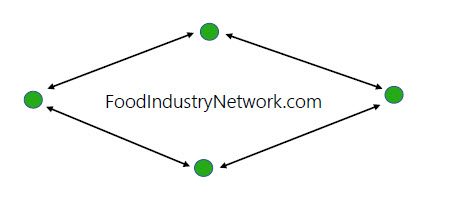CME Group introduces new spring wheat futures contract

SASKATOON — The CME Group has launched its hard red spring wheat futures contracts.
“Market participants can now trade all major varieties of North American wheat on a single exchange,” CME said in a recent article it published about the new HRSW futures and options.
It will trade alongside the current Minneapolis Grain Exchange’s (MGEX) hard red spring wheat benchmark contract that debuted in 1883.
Read Also


Live coverage: The 2025 federal agriculture debate
Newest updates will be added at the top of this page Barlow: developing markets at home by eliminating interprovincial trade…
“It’s very hard to establish a new spring wheat contract,” said MarketsFarm analyst Bruce Burnett.
“It takes a lot of skill and luck to get a new contract off the ground that does significant volume.”
The volumes for the CME contract so far have been “fairly disappointing.”
He doesn’t think there was a burning need for a new contract, but it will be interesting to watch the two exchanges duke it out in the coming months and years.
Burnett thinks there will only be one eventual survivor. MGEX has a 142-year legacy, but CME has huge trade volumes with other agricultural commodities.
“We’ll see,” he said.
“That’s a very powerful commodity futures organization behind it.”
Some of the delivery specifications and rules are different in the CME contract.
DTN reports that the biggest difference is that the CME contract has a falling number requirement for delivery, while the MGEX contract does not.
Most Canadian spring wheat farmers participate in the MGEX contract via their local elevators through cash pricing programs or basis contracts that have a futures leg and a basis leg.
However, some growers also trade on the Minneapolis exchange through a broker.
Burnett said it will be interesting to see if commercial entities jump on board with the new CME contract or stick with the familiar MGEX contract. That will ultimately decide which exchange wins the battle.
ICE Futures Canada introduced its milling wheat futures and options in January 2012 following the enactment of Bill C-18, which ended the Canadian Wheat Board’s marketing monopoly.
It was not a success, according to Burnett.
“I haven’t heard of its demise, but the volumes on it were just horrendously low,” he said.
The CME said spring wheat comprised 75 percent of all Canadian wheat production and 26 percent of all U.S. wheat production in the most recent marketing year.
Kansas City wheat futures are based on hard red winter wheat, which is used for all-purpose flour, while Chicago wheat futures are generally delivered against soft red winter wheat, used for pastries and baked goods, noted the CME in its article.
Source: www.producer.com


